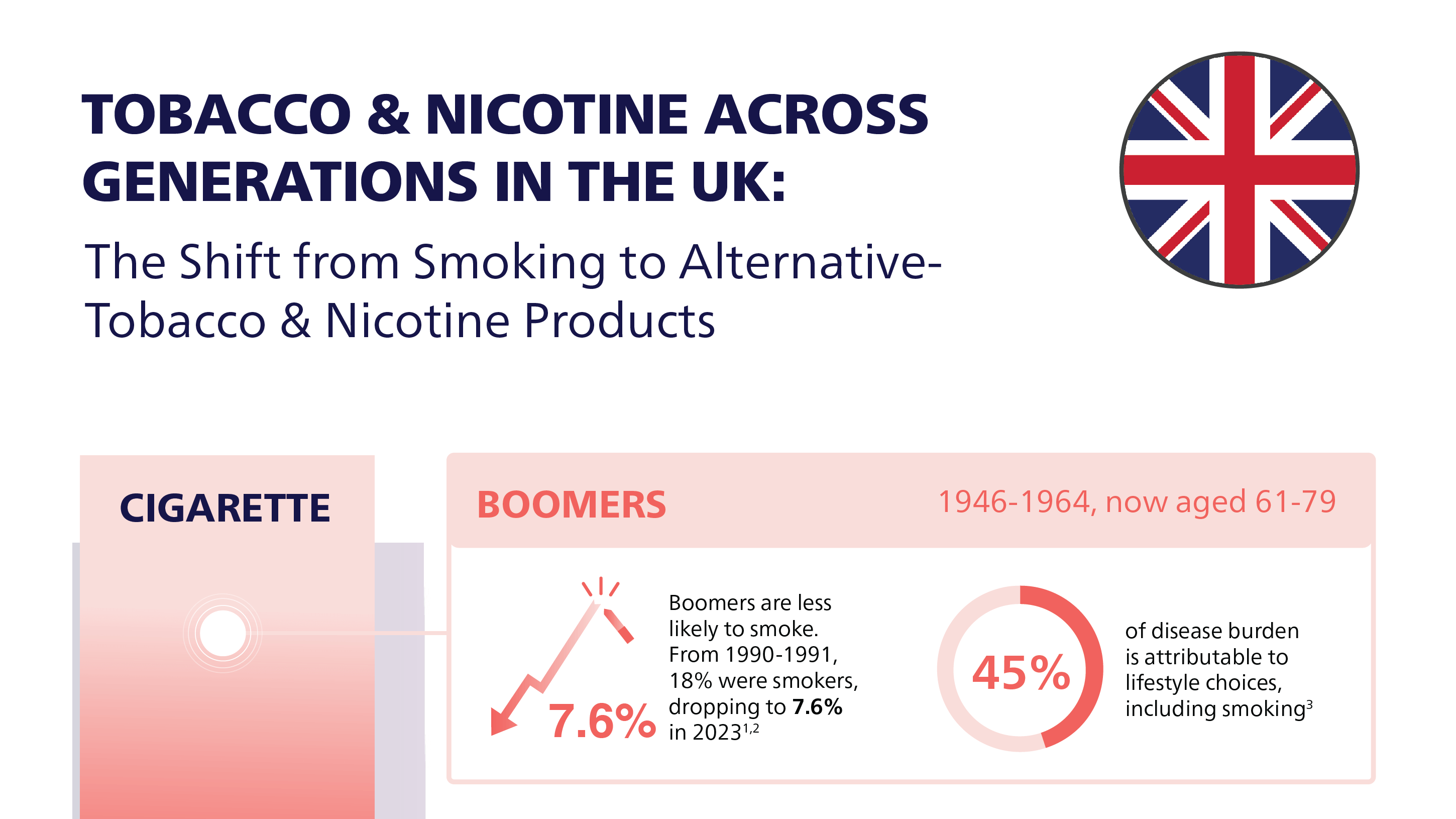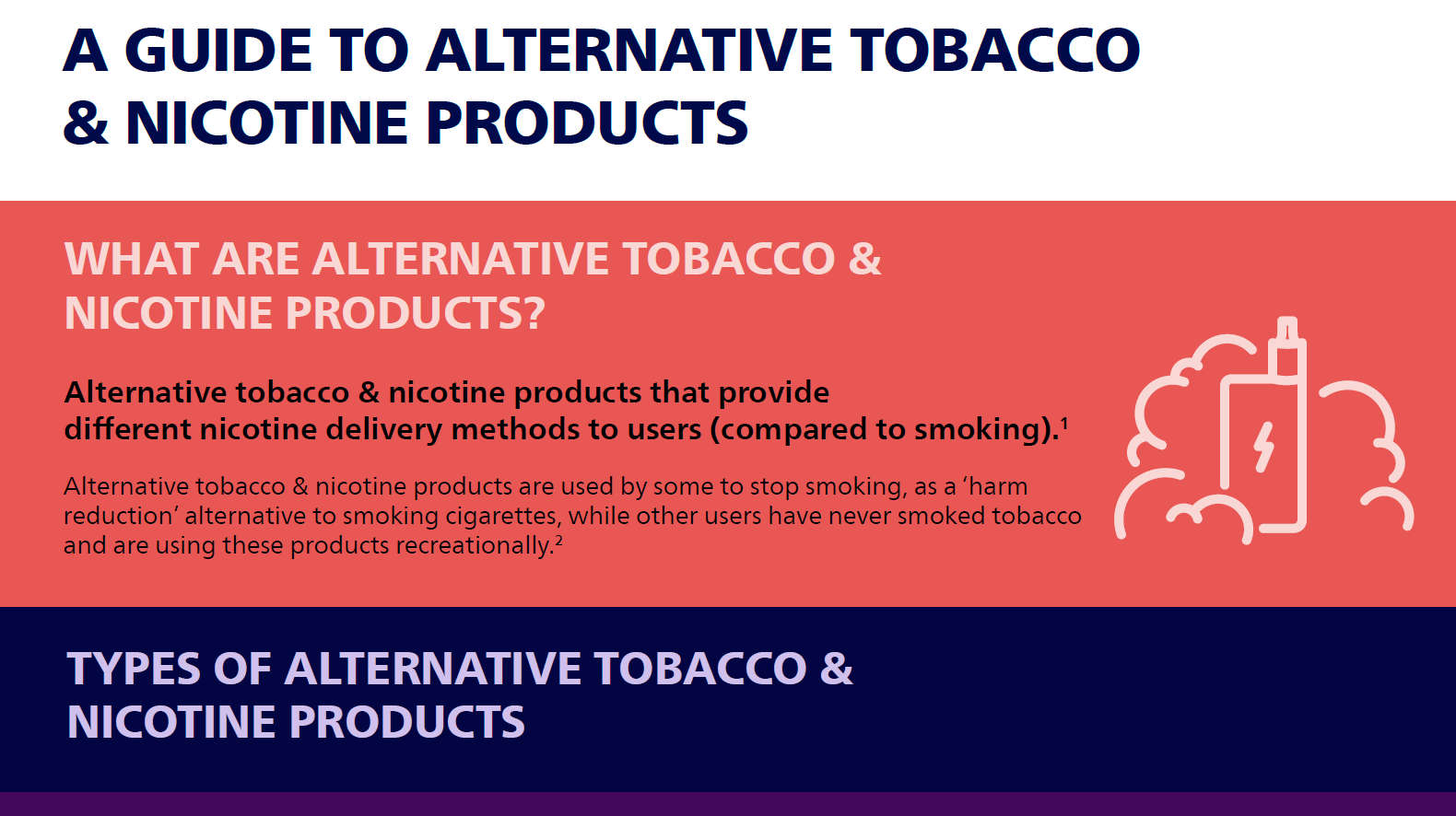Total Quit™
Working towards a tobacco and nicotine-free future
A Total Quit™ is when we achieve freedom from tobacco and nicotine. While great strides have been made in smoking cessation, experts and health policymakers must now focus their efforts on supporting smokers and alternative tobacco and nicotine product users in achieving a Total Quit, by ensuring access to cessation tools, while also working to regulate the increasing non-therapeutic use of recreational alternative tobacco and nicotine products.

Total Quit™
Working towards a tobacco and nicotine-free future
A Total Quit™ is when we achieve freedom from tobacco and nicotine. While great strides have been made in smoking cessation, experts and health policymakers must now focus their efforts on supporting smokers and alternative tobacco and nicotine product users in achieving a Total Quit, by ensuring access to cessation tools, while also working to regulate the increasing non-therapeutic use of recreational alternative tobacco and nicotine products.

Total Quit™
Working towards a tobacco and nicotine-free future
A Total Quit™ is when we achieve freedom from tobacco and nicotine. While great strides have been made in smoking cessation, experts and health policymakers must now focus their efforts on supporting smokers and alternative tobacco and nicotine product users in achieving a Total Quit, by ensuring access to cessation tools, while also working to regulate the increasing non-therapeutic use of recreational alternative tobacco and nicotine products.

Why We Need a Total Quit
Challenges We’re Facing
While the battle against tobacco has been a major health success and the number of smokers has fallen sharply, new formats of tobacco and nicotine are facilitating new and long-term dependencies and call for a new policy agenda:1,2
1 in 5 recreational alternative tobacco and nicotine product users start using these products without ever having smoked.3
Children aged 13-15 are using e-cigarettes at rates higher than adults in all World Health Organisation (WHO) regions, potentially leading to new, long-term dependencies.4
In Britain, 1 in 5 children aged 11–17 have tried vapes, a five-fold increase since 2013.5 With an estimated 10% of adults vaping in Great Britain.6
Increasing production and use of alternative tobacco and nicotine products combined with unregulated disposal of single use vapes/e-cigarettes that not only contain plastic, but also rechargeable lithium-ion batteries and toxic metals, are having a widespread impact on our world:
Alternative tobacco and nicotine products can potentially be more harmful to the environment than cigarettes, according to the WHO.7
Some progress has been made to combat this environmental burden in some countries, with the UK Government having banned the sale of single use vapes from 1st June 2025.8
To achieve a future free from tobacco and nicotine, we can’t quit now. We must prioritise a policy agenda that promotes and supports a Total Quit.
Educational Resources
Explore our educational resources to learn more about the changing tobacco and nicotine landscape and the concerning rise in recreational use of alternative tobacco and nicotine products.

Tobacco and Nicotine across Generations in the UK
The Shift from Smoking to Alternative Tobacco and Nicotine Products in the UK.
References
1. WHO. WHO global report on trends in prevalence of tobacco use 2000–2030. Last accessed: May 2025. https://iris.who.int/bitstream/handle/10665/375711/9789240088283-eng.pdf?sequence=1. Last accessed: May 2025.
2. Abozenah M, Nazir NT, Sareen N, Brandt E, Pack QR, Ibebuogu U, Shetty M, Singh K, Stecker EC, Yang E. Tobacco Use, Electronic Nicotine Delivery Systems, and Vulnerable Populations: Current Landscape and Opportunities for Improvement. JACC Adv. 2024 Nov 27;3(11):101362.
3. Incite 2024, Kenvue Global CEPs Usage and Attitude Report.
4. WHO. Urgent action needed to protect children and prevent the update of e-cigarettes. https://www.who.int/news/item/14-12-2023-urgent-action-needed-to-protect-children-and-prevent-the-uptake-of-e-cigarettes. Last accessed: December 2024.
5. Action on Smoking and Health. Use of vapes among young people in Great Britain July 2025. https://ash.org.uk/uploads/Use-of-Vapes-Among-Adults-in-Great-Britain-2025.pdf?v=1752070503. Last accessed: August 2025
6. Action on Smoking and Health. Use of vapes among adults in Great Britain. July 2025. https://ash.org.uk/uploads/Use-of-Vapes-Among-Adults-in-Great-Britain-2025.pdf?v=1752070503. Last accessed: September 2025
7. World Health Organization. Tobacco’s threat to the environment. https://cdn.who.int/media/docs/librariesprovider2/euro-health-topics/tobacco/tobacco-env-factsheet-eng.pdf?sfvrsn=1b9ced39_1&download=true. Last accessed August 2025.
8. GOV.UK. Single-use vapes banned from 1 June 2025. https://www.gov.uk/government/news/single-use-vapes-banned-from-1-june-2025. Last accessed August 2025.
